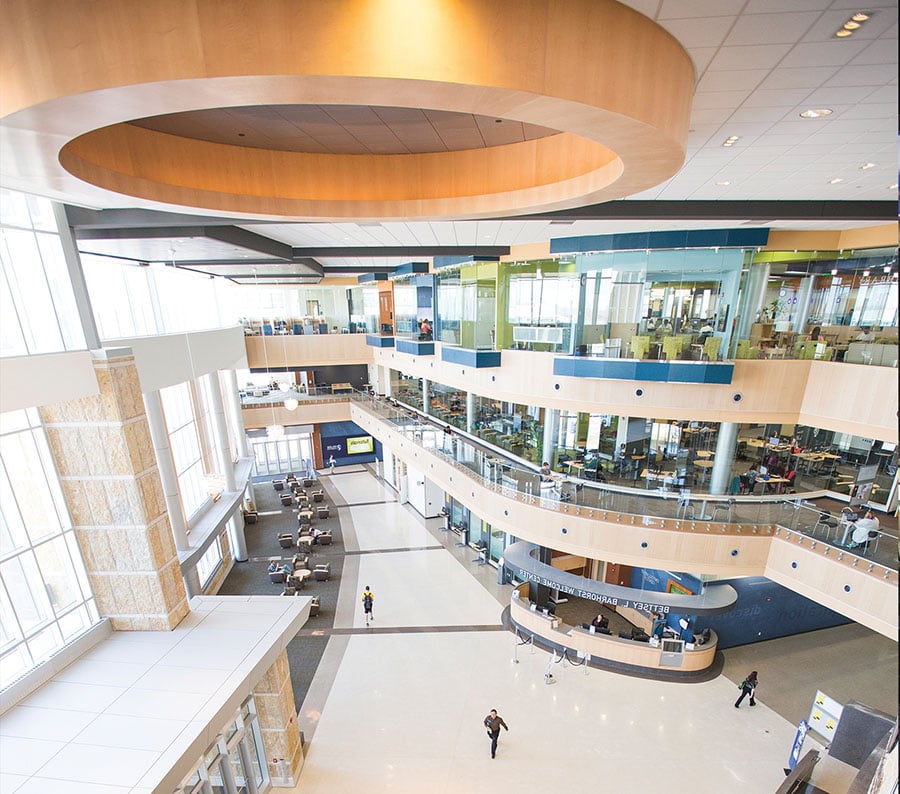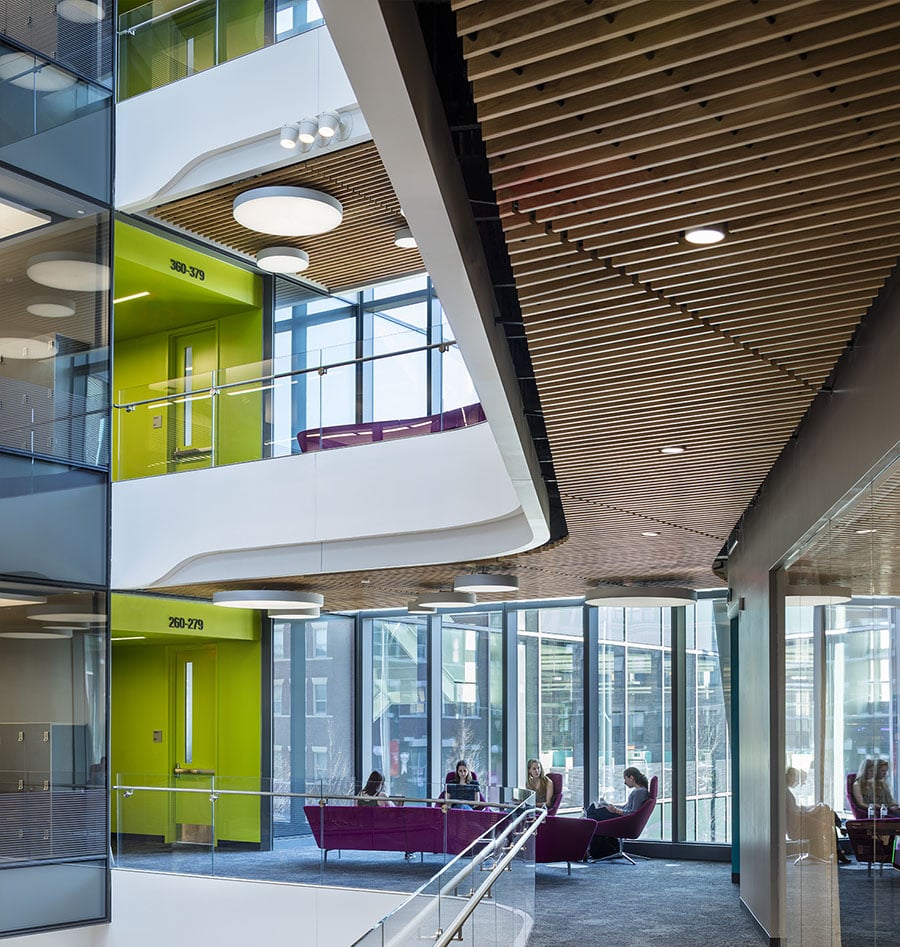
December 18, 2019
Better Lighting for Better Learning
Human centric lighting helps colleges and universities keep students and teachers happy and support their wellbeing.
Presented by:

The days of classrooms bathed in the blue glow of fluorescent lights, study carrels with dim task lighting, and darkened lecture halls where the whirr of a slide projector lulls students to sleep are over. Institutions of higher education have changed. Today, learning increasingly takes place outside of the classroom, computer screens have all but replaced textbooks, and professors made of flesh, blood, and tweed are increasingly supplemented by remote learning and off-campus opportunities. With these changes comes a need for lighting systems that are flexible, customizable, and support the learning and teaching experiences.
The correlation between learning and daylight is a well established one. In 1999, the Heschong Mahone Group’s “Daylighting in Schools” study, conducted in a group of California schools, found a correlation between increased daylight and higher test scores as well as a more positive mood among teachers and students. Since then, lighting designers have learned even more about how to design systems to benefit students and teachers alike. “LED technology may offer similar benefits to daylighting,” says Sara Schonour, head of CannonDesign’s Lighting Studio, “and now we better understand how light impacts our attention spans, ability to focus, mood, circadian rhythm and more.”

Daylighting and maximizing exposure to natural light is crucial to the successful design of any academic space. Unfortunately, site constraints, and the fact that many students work and learn after daylight hours, mean that spaces like classrooms, libraries, dormitory common rooms, and student centers can all benefit from the ability to mimic natural light when the need arises. “To best facilitate a task or reflect the current mood, our workplaces and homes have to be nimble and responsive.” Says Brent Protzman, Director of Building Science & Standards Development at Lutron Electronics. “Tunable white light allows architects and designers to mimic daylight and reinforce the connection to the outdoors.” That flexibility, when combined with advanced control systems for human-centric design that can manipulate color temperature and brightness on demand, is especially useful in colleges and universities that increasingly rely on multipurpose spaces.
In today’s university, a single room might be used by a dozen different people with drastically different needs throughout the day. “The ability to visually cue expected behavior with light is very promising.” Says Schonour, who explains that, “dimmer, warmer light may be well paired with mellower activities while cooler, brighter light signals it’s time to focus energy and become more active.” The level of control that human centric lighting systems offer a user—which in an academic setting is usually an instructor—is extraordinary. With tunable LEDs, instructors can easily cue moods and actions, not to mention increasing student’s attention and ability to retain knowledge.

Lighting design must also account for the proliferation of other learning technologies. Today, instead of attending a Biology 101 in thousand-seat lecture hall, a student may participate remotely, even a poetry seminar may be conducted via skype. The popularity of screen-based learning requires designers to rethink how learning spaces are lit, to minimize glare and allow educators flexibility to control the lights to suit a variety of screen conditions. But it’s not only what students and teachers are seeing on their screens, as distance learning becomes more popular and video calls ubiquitous, designers must consider lighting for the “eye” of the camera as well as those of traditional “users,” Schonour says
Higher education has embraced technology, and there are many alternatives to a four-year education based on a residential campus where learning is done in lectures, classrooms, and libraries. But students and teachers are still human beings, they respond positively to daylight with improved mood and concentration. Whether on college campuses or anywhere learning is done, human-centric lighting should be seen as both a tool to improve the learning and teaching experiences in concert with the other technologies that have transformed education, and also a way to improve the students’ and staff’s wellbeing through daylighting and biophilic design.





